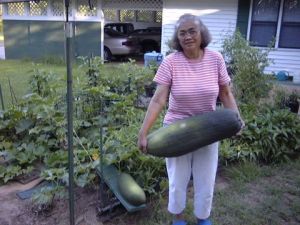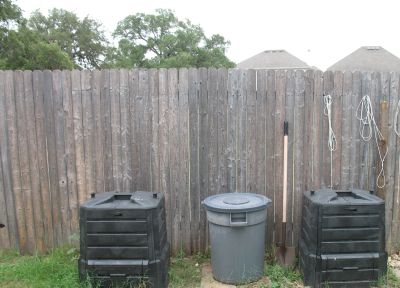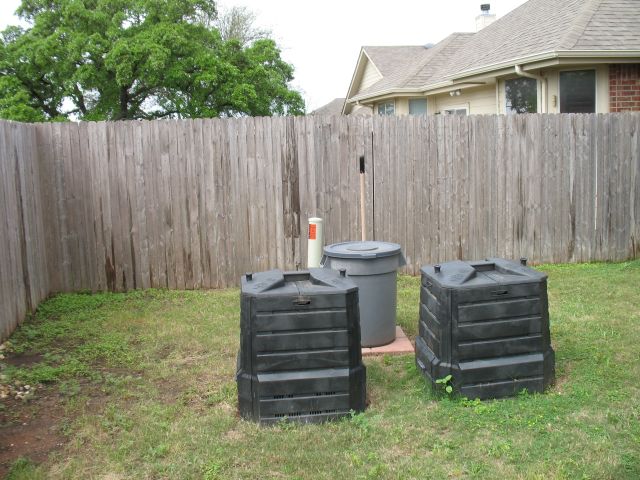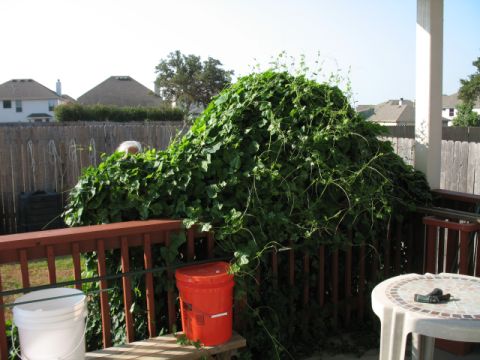Even
during winter there’ll be decomposition, and by the end of spring we might
have two bins with good compost.
Now
our “problem” will be what to do with all of it.
As noted earlier, we try to save at least a barrel of it to cover the summer’s kitchen contributions. If we don’t save enough, we’ll have to go and buy some more bags of topsoil, and won’t we feel dumb doing that. (Yes, we will. Again, don't ask me how I know.)
The rest of the compost can go to our garden or bare patches of lawn. It’ll be a treat they’ll appreciate, with new minerals and elements feeding the plants through the growing seasons. Not to mention the improved texture of the earth allowing water and oxygen to penetrate down to the plant’s roots.
 Garden
experts say compost is about the single best thing we can do for our plants. Better than
the topsoil we buy in bags.
Garden
experts say compost is about the single best thing we can do for our plants. Better than
the topsoil we buy in bags.
Best of all, maybe, by making compost, we’ve created something good
from something we were going to discard. We’ve returned earth to earth. In
fact, we’ve improved the earth.
It doesn’t get any better than composting.
I hope this has encouraged you to give composting a try. I'd enjoy hearing that it has: usarmycwo at yahoo dot com.
-- Steve Kohn
Post scripts:
1. The October 2008 issue of "This Old House" magazine has a detailed article on composting that counters some of my advice. For example, it recommends grass clippings (I don't) and says "Aerate the pile with a pitchfork or shovel about once a week to distribute air and moisture...." which you know I think leads to a pulled back. Reading the article, you'd say composting is way too hard and not even want to try. Please give my simple methods a chance before giving up.
2. In 2008 we moved from 6+ acres in Georgia to a subdivision near San Antonio, into a house with a small back yard and privacy fences. The first couple years we didn't have any compost bins, deciding the simple pole-and-chicken wire bins wouldn't work here as they did before. A tumbler-type composter was considered. Knew we had to do something, but didn't know what. Then we got lucky.
Here's what we've used the past nine years: two Soilsaver bins. They're terrific.
They're sized just right, neither too large nor too small. They're durable; in their 9th southern-Texas summer they haven't deteriorated a bit. They produce good compost without turning dirt over. They don't look bad in a suburban back yard. And they're priced right, about $60 each.
The photo below left shows what they looked like in our back yard. But four years later I decided they were placed wrong, too shaded by the fence. So when the right bin was empty, I moved it up about ten feet, into the full sun, then moved the other bin when it also got empty. The right photo below shows how it looks now, along with the can to hold our finished compost. It's working great. (Tip: place the bins and can so that our lawnmower can squeeze between them.)


By the way, compost works as well in Texas as it did in Georgia. Here's a photo of some plants my wife planted next to the back patio. Out-of-control!

3. For a few cents at Amazon, buy a used copy of "Let It Rot," by Stu Campbell. The book is full of good information. More information than we need but at least it's there if we want it. And I like the author's attitude.
4 As noted on the first page of this site, go to https://youtu.be/nrbTcYMQXyY for the best introduction and tutorial on composting I've yet found. We disagree on a few minor matters, but I'd go with her advice before mine.